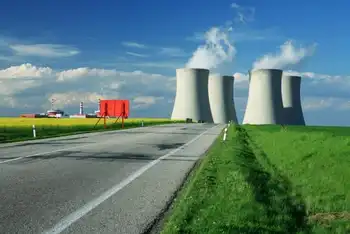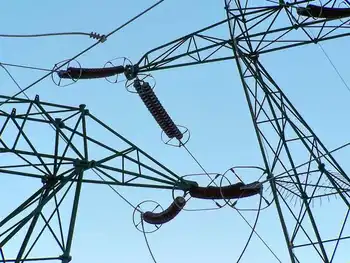German wind power moves further out to sea
By Reuters
CSA Z462 Arc Flash Training - Electrical Safety Essentials
Our customized live online or in‑person group training can be delivered to your staff at your location.

- Live Online
- 6 hours Instructor-led
- Group Training Available
The Alpha Ventus wind park started this month and operates 45 km off the German-Dutch coast. Existing European wind parks operate only 20 km offshore at the most.
"Alpha Ventus is navigating uncharted waters for us to see what problems could be encountered in the offshore wind industry globally," said Thorsten Herdan, executive director of VDMA Power Systems, which represents German equipment makers.
"If we can successfully produce equipment to operate under such harsh conditions this far out in the North Sea, we would definitely lead the world in terms of material and operations."
Alpha Ventus was forced by German environmental laws to build in deeper waters further out to protect tidelands.
The 250 million euros (US$357.7 million) test field, also known as Borkum West, lies near the German-Dutch border with steel foundations 30 meters deep.
Three of the 12 Alpha Ventus turbines of five megawatts have already begun test runs and the rest are expected to start by the end of 2009.
Not just the big utilities that clubbed together for Alpha Ventus — E.ON, Vattenfall Europe and smaller rival EWE — are betting on its success.
German Repower and French Areva jointly supply the turbines for Alpha Ventus.
But Germany's Siemens and Denmark's Vestas, which installed half of all the world's existing turbines, also hope to benefit.
Some analysts believe higher-technology offshore wind has a big potential future within the next decade.
"In the long-term, by 2015, it could have a recognizable impact on the wind industry," Katharina Cholewa, analyst at WestLB, said.
The International Energy Agency believes that offshore wind power will grow more than 100-fold by 2030.
To ensure that the planned thousands of megawatts of wind farms can materialize, many European Union countries have created generous support schemes, to help the bloc achieve its targets to cut carbon pollution from fossil fuel burning.
Germany, the second biggest wind power producer in the world after the United States, finds its onshore sites are restricted and has raised the offshore wind remuneration within its feed-in renewable power tariff for at least six years from 2009.
This is borne by consumers and aims to help meet a national target for wind to supply 12 percent of German power by 2020.
Britain has an ambitious plan to expand its capacity to 33-40 gigawatts (GW) by 2020.
Spain and Sweden are also already offshore players and France and Norway want to join them.
The United States and China look set to be the largest potential export markets for European offshore-wind expertise.
There are plans in the U.S. to use the East Coast to supply wind power to big cities there, rather than transporting it over long distances.
But market leader GE Energy has said it expects delays to further offshore involvements on its part as its order books are full with onshore projects, giving space to Europeans.
China says it faces technological challenges trying to plant wind turbines in the East China Sea and may look abroad for help.
But some of Europe's biggest wind power players are less buoyant and are happy to let competitors take the first moves.
Germany's Nordex decided not to develop products solely for offshore purposes for now.
"This may well become a big market, but certainly not in the short-term," said Nordex spokesman Ralf Peter, adding it would take another three to five years before the niche widens out.
Alpha Ventus' 15 megawatts (MW) are a miniscule load compared with the 600 MW that Britain is already tapping from its offshore wind sector.
Even confident VDMA has its reservations.
"Up to now there are still question marks whether well dimensioned grids will be built in time to transport offshore wind power," said Herdan.
Sal Oppenheim analyst Stephan Wulf said, "There are dangers of cost overruns before the projects are up and running."
"And operational risks include lacking experiences with the reliability of turbines if you consider excessive material stress, for example."











